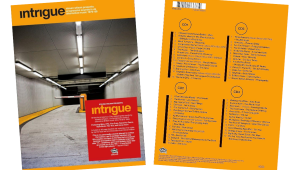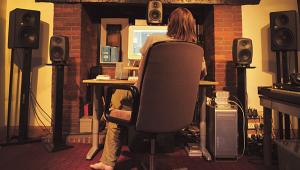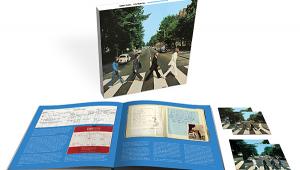In the bitlife Life Simulator, you will play a simulation game where you must make life-changing choices. For instance, you could wed the love of your life, start a family, and further your education.
David Gilmour: Luck and Strange in Dolby Atmos

Immersive music, thy name be David Gilmour. Though Pink Floyd may be a semi-distant active memory, lead guitarist/vocalist David Gilmour has seen fit to issue some quite intriguing solo projects here and there over the past five or so decades. His fifth solo studio effort, Luck and Strange, which was released by Sony Music in multiple formats on September 6, 2024, may indeed be his best outing under his own name—most especially in its Dolby Atmos incarnation.
Gilmour has gone on the record in recent months by saying that he feels Luck and Strange is his most satisfying creative effort since Pink Floyd’s March 1973 masterstroke on Harvest/Capitol, The Dark Side of the Moon. While it’s hard to put both albums on equal footing as of yet in the here and now, you can certainly hear why Gilmour is so point-me-at-the-sky-high about the results when you cue up the Dolby Atmos mix of Luck and Strange. Me, I listen to scores of Atmos mixes on a regular basis in all swaths of musical genres, and I have to say Luck and Strange is one the most fully enveloping 360-degree mixes I’ve heard to date. For one thing, too many Atmos mixes err by leaving out or altogether ignoring side-channel-directed information—which, incidentally, can be accessed and appreciated in “phantom channel” style, even if you don’t have physical sides in your Atmos setup—but Luck and Strange readily utilizes all areas of the soundfield to increasingly great effect, especially within its bonus tracks. (More on all that in a bit.)
Perhaps it goes without saying that the best way to enjoy the benefits of Luck and Strange is via an open-air Atmos system—and with as many channels as your setup can handle. Sure, I also listened to L&S in Atmos via Apple Music on my AirPod Pros and a few different pairs of high-end headphones, but those sessions made me feel like I was missing out on the full immersality of it all. Cueing up the Atmos mix on the Sony Music Blu-ray edition of Luck and Strange on my physical listening-lab system was hands down (or should that be hands up?) the most optimal way to experience it.
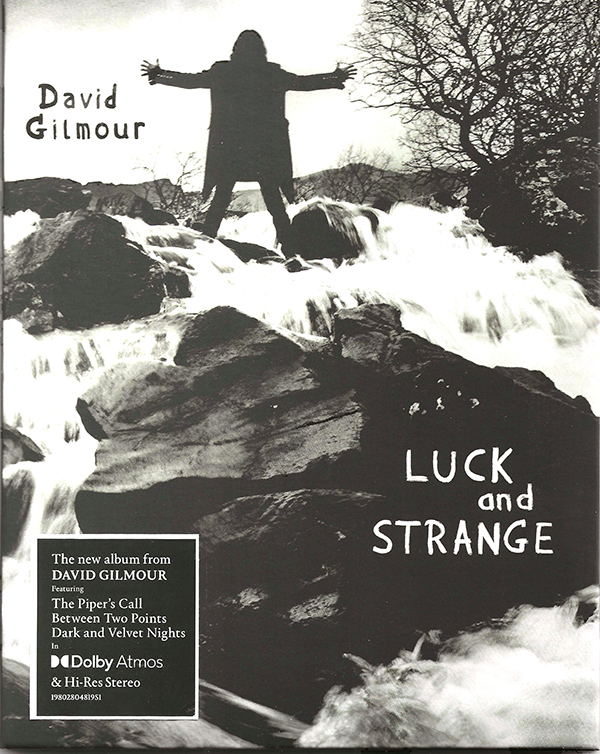
Now, if you’re a Floyd/Gilmour completist like me, you’ll certainly want to get your hands on as many versions of Luck and Strange as you can afford. The standalone Blu-ray, which is available via Music Direct, has a quite reasonable SRP of $29.99. The 5x5in square-box 2CD+1BD deluxe edition goes for a much meatier $109.99, while the 12x12in full-size 2LP+1BD super deluxe box set goes for a skitch more at $142.99. Both deluxe boxes contain a 68-page hardback book with many in-studio B&W photos by Gilmour lyricist/acclaimed author/spouse Polly Samson (one of which appears at the very top of this review) that show much of how it all went down. Pages 20 and 21 comprise perhaps my favorite spread in that book, with Gilmour caught making the “patented guitar player face” on the left side, and then, on the right side, captured with eyes closed and left hand on chin, likely contemplating his next move and/or assessing what he just played. If you’ve ever been a fly on the wall in a recording studio while tracking sessions like these are going down, Samson’s snaps deftly evoke the vibes of, and in, the moment.
Besides the collectability of it all, the real value lies within the music itself—and the Atmos mix of Luck and Strange should serve as a mixing/mastering clinic for anyone who thinks they know how to do it right. Now, exactly who did this Atmos mix is technically unclear in the credits, per se—Gilmour and Charlie Andrew share the overall production co-credit, while Gilmour, Andrew, and Matt Glasby share the “mixed by” credit. Known Gilmour surround-and-Atmos associates Andy Jackson and Damon Iddins are also involved in various aspects of the engineering credits, so perhaps they too had a hand in it to some degree—either way, I’m awaiting a further clarification of who did what. Regardless, it’s a team effort that pays off handsomely for any listener perched in the sweet spot for the entirety of the L&S Blu-ray’s 75-minute Atmos playback (and, of course, for many, many repeat listening sessions to boot).

The opening track, “Black Cat,” fades in from the rear left with a piano figure that then appears in the front left before taking residence again out back, as Gilmour’s signature guitar sears into play in the center left before fully centering in the heights. The title track reminds us of the ever-intuitive creative interplay between Gilmour and original Pink Floyd keyboardist Richard Wright, who sadly passed away in 2008, about a year after the sessions on display here bearing his instinctual accents and style occurred. You’ll also get vocal echo/delay in the clouds, and guitar in the sides. Then make sure you’re ready for the full-channel guitar-solo assault in the back half of “The Piper’s Call,” buttressed by the abject sinew of Guy Pratt’s bass in the sub channel.
The palate-cleansing “A Single Spark” is a bit more of a family affair, with a backing vocal blend of Gilmour’s voice with two of his offspring, daughter Romany Gilmour and son Gabriel Gilmour, one heavenly instance of which takes over the entire soundfield. The interplay between the string section and guitar is a masterful give-and-take broadstroke.
The all-too-brief “Vita Brevis”—which spotlights Romany’s harp and Gilmour’s slide work—leads directly into “Between Two Points,” a cover of a poignant tune by the underrated British duo The Montgolfier Brothers that features Romany on lead vocals, starting in the center left. Listen how she changes her inflection on the phrase “early age” in back-to-back line readings. “Dark and Velvet Nights” feels like a mesh between the roaring opening stanzas of Pink Floyd’s November 1979 masterpiece on Columbia, The Wall with Gilmour’s M.O. on his March 2006 solo album on Columbia, On An Island. The acoustic-oriented “Sings” is a wonderful lower-key reminder of how you sometimes just want to “stay inside this cocoon,” its own theme mirroring that of the album’s overall viewpoint on maturity, mortality, and the overall aging process.
The final track, “Scattered,” smatters in some sonic clues that might remind you of some of his previous band’s output—whether it be the metronomic heartbeat in “Speak to Me,” or the pinging Binson Echorec stabs of “Echoes,” for example—but that only adds to the proper absorption of the scope of an artist’s body of work at work, in the moment. The swelling orchestral break takes to the ether as it should, but thankfully, none of it gets obscured by clouds. “Time is a tide [. . .] that never ends,” Samson’s lyrics conclude—and that’s about as good an assessment of her life-partner Gilmour’s C.V. as any I’ve heard.

The four bonus tracks (with a running time of 31 minutes!) are pure Atmos manna. I’m not sure why “Yes, I Have Ghosts” was left off the main album, as it’s another palpable extension of the Romany/David vocal DNA connection, replete with some pretty cool string samples throughout. The ensuing “original barn jam” version of “Luck and Strange” is yet another reminder of the mindmeld of the Gilmour/Wright axis. This lengthy instrumental track opens with Guy Pratt’s supple bass line reverberating off drummer Steve DiStanislao’s snare, which instantly gives you a sense of the space they’re all playing in together—and then Gilmour’s wailing guitar nestles in the left side channel while Wright switches off between Hammond organ and electric piano in the right side channel. I never really wanted this heady 10-plus-minute jam to end, truth be told.
The final two bonus cuts are the orchestral versions of “A Single Spark” and “Scattered,” both of which are key in understanding just how good and deeply layered Will Gardner’s orchestral arrangements throughout the album truly are, not to mention how Rob Gentry’s piano, keyboard, and synth work add to the proceedings. Also, take heed, for those aforementioned cloud-based orchestral swells in the back half of “Scattered” will certainly challenge just how much you can set your volume controls for the heart of the Atmos sun—but it’ll totally be worth it.
I could go on and on about the merits of listening to Luck and Strange over and over in Atmos—but then I might be keeping you from hearing it for yourself. The fact is, the phrase Luck and Strange doesn’t really do the scope of its Atmos mix proper justice. Me, I’d subtitle it something like Let’s Deafinitely Get Metaphysical, and/or Merit and Sweet. Either way, Luck and Strange is an indisputable benchmark for Atmos mixing—and I hope David Gilmour and co. have it in them to keep giving us more immersive offerings as the endless river of time and tuneage flows ever onward.
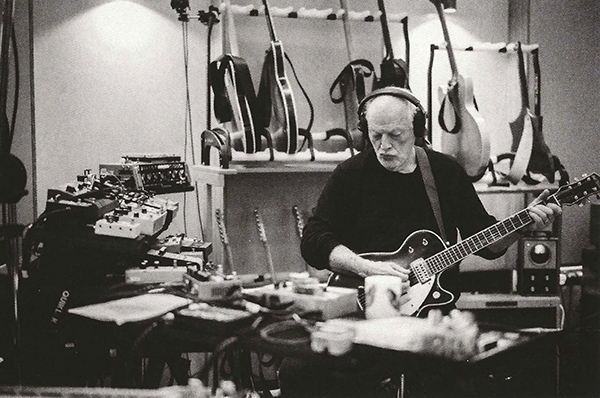
- Log in or register to post comments

Gilmour is a legend for me.
Robert from Gouttières Lanaudiere, A family business.

In your free time, you can experience some fun games like geometry dash 3d to have much fun.




